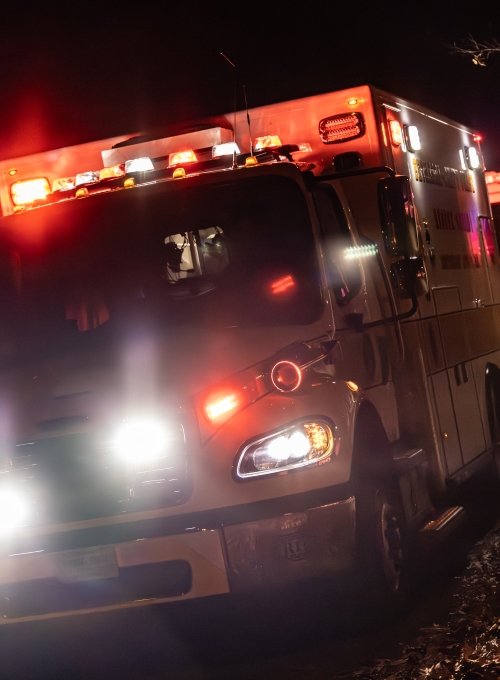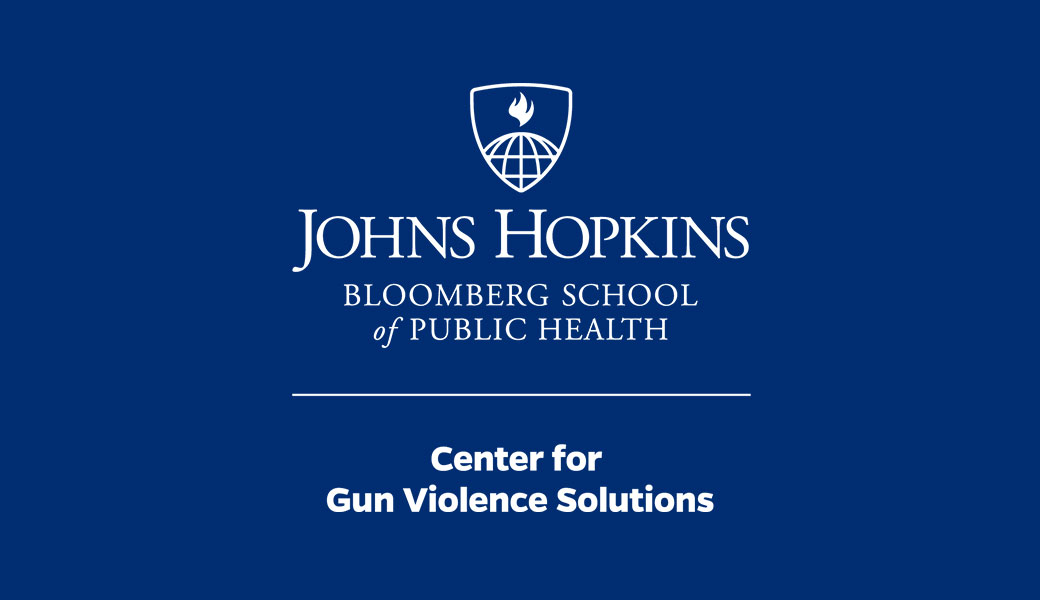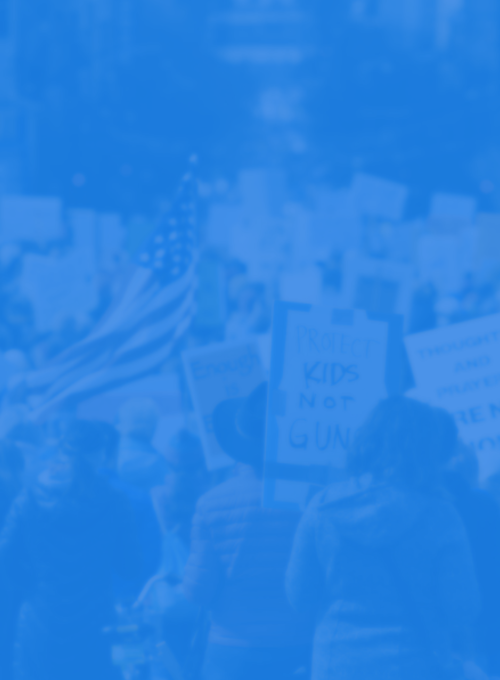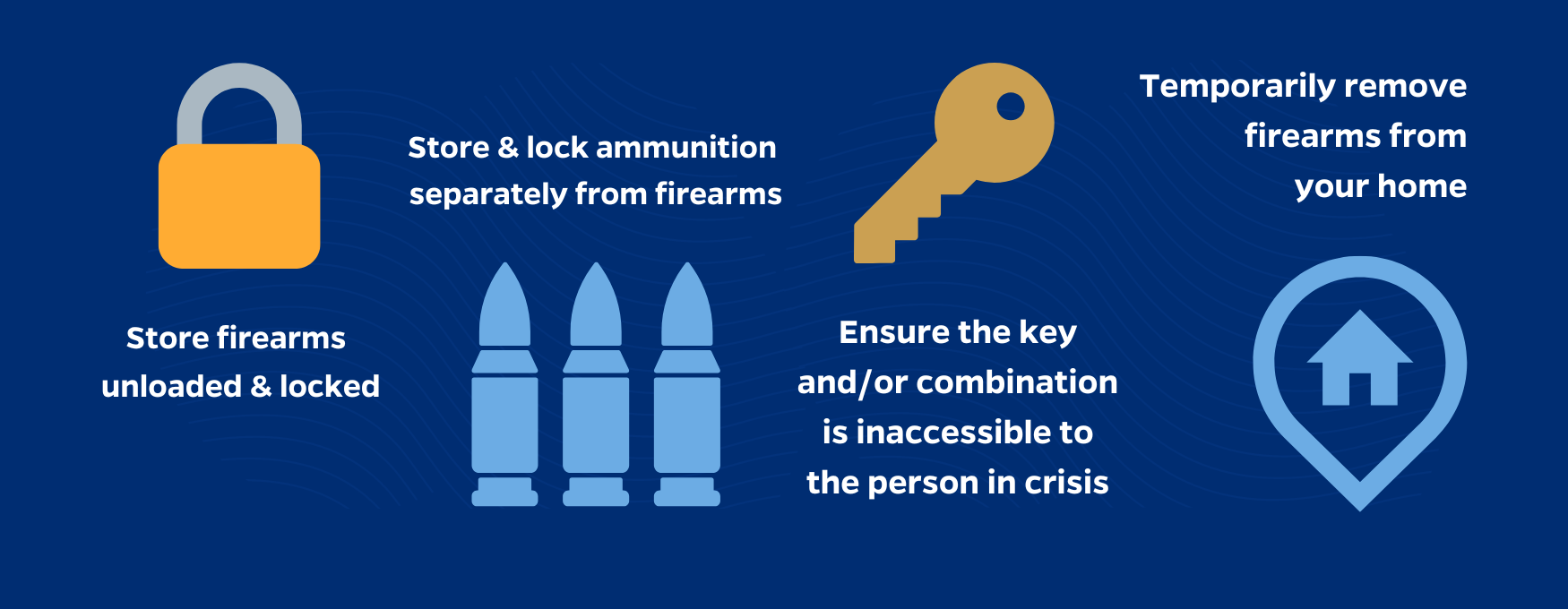
Gun Violence in the U.S. 2022: Examining the Burden Among Children & Teens
For the third straight year, firearms killed more children and teens, ages 1 to 17, than any other cause including car crashes and cancer. Our analysis found 48,204 people, the second highest on record, died from gunshots in the U.S. in 2022, including 27,032 suicides, an all-time high for the country.
On This Page
Learn more about firearm violence. On this page explore the geography of gun violence, statistics and trends of firearm ownership, the latest data from the CDC on firearm deaths, and more.

Overview of Gun Violence
Firearm violence is a preventable public health tragedy affecting communities across the United States. In 2022, 48,2041 people died by firearms in the United States — an average of one death every 11 minutes.
Over 27,032 people died by firearm suicide, 19,651 died by firearm homicide, 463 died by unintentional gun injury, and an estimated 643 were fatally shot by law enforcement. In addition, an average of more than 200 Americans visit the emergency department for nonfatal firearm injuries each day.3
For each firearm death, many more people are shot and survive their injuries, are shot at but not physically injured, or witness firearm violence. Many experience firearm violence in other ways, by living in impacted communities with high levels of violence, losing loved ones to firearm violence, or being threatened with a firearm. Others are fearful to walk in their neighborhoods, attend events, or send their child to school. In short, firearm violence is a public health epidemic that has lasting impacts on the health and well-being of everyone in this country.
Overwhelming evidence shows that firearm ownership and access is associated with increased suicide, homicide, unintentional firearm deaths, and injuries. These injuries and deaths are preventable, through evidence-based solutions.
The Geography of Gun Violence
Gun death rates vary widely across the United States due to differences in socio-economic factors, demographics, and, importantly, gun policies. In general, the states with the highest gun death rates tend to be states in the South or Mountain West, with weaker gun laws and higher levels of gun ownership, while gun death rates are lower in the Northeast, where gun violence prevention laws are stronger.
“Other” gun death rates include legal intervention, unintentional, and undetermined. Source: Centers for Disease Control and Prevention. National Center for Health Statistics. Underlying Cause of Death. Age-adjusted Gun Rates per 100,000. WONDER Online Database, 2018-2022
Priority Solutions

The Center for Gun Violence Solutions applies our unique blend of research and advocacy to advance five priority evidence-based gun violence prevention policies: Firearm Purchaser Licensing, firearm removal laws (including ERPOs and DVPOs), safe and secure gun storage, regulation of public carry of firearms and Community Violence Intervention. Our research shows that, when enacted in combination, these policies have the potential to save thousands of lives.
These 5 Save Lives

Support Our Life Saving Work
Firearm Ownership
Firearms remain embedded in American history and modern culture.
Americans own 46% of the world’s civilian-owned firearms and U.S. firearm ownership rates far exceed those of other high-income countries.4,5 Forty-six percent of U.S. households report owning at least one firearm, including 30% of Americans who say they personally own a firearm.6,7 Firearm ownership varies significantly by state. For example, an estimated 64% of households own a firearm in Montana compared to only 8% in New Jersey.8
It has been well-documented that firearm ownership rates are associated with increased firearm-related death rates. Among high-income countries, the United States is an outlier in terms of firearm violence. The U.S. has the highest firearm ownership and highest firearm death rates of 27 high-income countries.9
The firearm homicide rate in the U.S. is nearly 25 times higher than other high-income countries and the firearm suicide rate is nearly 10 times that of other high-income countries.10
Firearm purchases increased during the COVID-19 Pandemic
During the COVID-19 pandemic firearm sales rose at unprecedented levels with an estimated one in five U.S. households purchasing a firearm from March 2020 to March 2022.11 The FBI reported a record high of 20 million annual firearm sales in both 2020 and 2021, up from an average of 13 million firearms sold from 2010 to 2019.12
Knowing the Facts About Firearm Ownership and Safety
It’s important for individuals to know the risks of firearm ownership, and the reality that higher levels of firearm ownership and carrying do not reduce violence or enhance public safety.
Over four decades of public health research consistently finds that firearm ownership increases the risk of firearm homicide, suicide, and unintentional injury. Nevertheless, more than 6 in 10 Americans believe that a firearm in the home makes the family safer—a figure that has nearly doubled since 2000.13 This increase in perceived safety is reflected in shifting reasons for firearm ownership. In a 2023 Pew Research survey, more than two-thirds (71%) of firearm owners cited protection as a major reason for ownership.14 This represents a notable increase from the mid-1990s, when the majority of American firearm owners cited recreation as their primary reason for ownership and fewer than half owned firearms primarily for protection.15
Research runs counter to these changing public perceptions of firearms providing safety. It shows that firearm ownership puts individuals and their families at higher risk of injury and death. Individuals who choose to own a firearm can mitigate many of the risks associated with ownership by always storing their firearms unloaded and locked in a secure place, and refraining from carrying their firearms in public places.

Firearm owners can make their homes safer through secure firearm storage practices. Unfortunately, the majority of U.S. firearm owners choose to leave their firearms unlocked, allowing children or persons, who are at risk for violence to self or others, to access them.16 An estimated 4.6 million children live in households with at least one firearm that is loaded and unlocked.17 These unsafe storage practices lead to countless suicides, homicides, and unintentional injuries by individuals who should not have access to a firearm. This includes children, prohibited persons with a history of violence, and family members who may be suicidal or temporarily in crisis.
Leaving firearms unsecured also fuels theft—a primary avenue in which firearms are diverted into the illegal market and used in crime. There are an estimated 250,000 firearm theft incidents each year resulting in about 380,000 firearms stolen annually.18 In recent years, as more Americans carry firearms in public, theft from cars has skyrocketed. Firearms stolen from cars now make up the majority of thefts. In fact, one analysis of crime data reported to the FBI found that on average, at least one firearm is reported stolen from a car every 15 minutes.19
Carrying firearms in public also increases the risk for violence by escalating minor arguments and increasing the chances that a confrontation will become lethal. Research has found that even the mere presence of a firearm increases aggressive thoughts and actions.20
Some believe that carrying a firearm will act as a deterrent and help prevent conflicts or minimize harm. While there are specific examples where this was true, there are many more cases where firearm carrying escalates conflict and leads to firearm injury or death. In aggregate, research shows firearm carrying increases levels of violent crime.21
Safe & Secure Gun Storage
Safe and secure gun storage practices prevent those who can’t legally have guns, potential thieves, and individuals within the household including children and those at elevated risk for suicide or violence against others, from accessing guns. Safely storing firearms can reduce gun injuries and deaths, and is supported by researchers, healthcare professionals, and gun owners alike.
How Does Access to Firearms Affect Deaths?
Higher levels of firearm ownership and permissive firearm laws are associated with higher rates of suicide, homicide, violent crime, unintentional firearm deaths, and shootings by police.
Suicide
More than 55% of all firearm deaths are suicides.22 Evidence consistently shows that access to firearms increases the risk of suicide.23,24
Access to a firearm in the home increases the odds of suicide more than three-fold.25 Firearms are dangerous when someone is at risk for suicide because they are the most lethal suicide attempt method. Eighty-five percent of suicide attempts with a firearm are fatal compared to the most widely used suicide attempt methods, which have case fatality rates below 5%.26
Research shows that individuals often do not substitute means for suicide if their preferred method is not available. In other words, when individuals who have planned a suicide by firearm cannot access a one, they often not do attempt suicide by another method.27 Even if they substitute firearms with another method they increase their chances of survival because virtually every other method is less lethal than firearms.28 Delaying a suicide attempt can also allow suicidal crises to pass and lead to fewer suicides. Ninety percent of individuals who attempt suicide and survive do not go on to die by suicide.29 The use of a firearm in a suicide attempt often means there is no second chance. Reducing access to lethal means, such as firearms, is critical to saving lives.
Policies and practices that temporarily restrict access to someone at elevated risk for suicide can save lives. These interventions include Extreme Risk Protection Orders, safe and secure firearm storage practices, and lethal means safety counseling.
Homicide + Violent Crime
Over 40% of all firearm deaths are homicides.30 Access to firearms—such as the presence of a firearm in the home—is correlated with an increased risk for homicide victimization.31
Studies show that access to firearms in the household doubles the risk of homicide.32 States with high rates of firearm ownership consistently have higher firearm homicide rates.33 Firearms drive our nation’s high homicide rate, accounting for 8 out of every 10 homicides committed.34
Lax public carry laws which allow individuals to carry firearms in public places with little oversight are linked to increases in firearm homicides and assaults.35 Similarly, states with permissive firearm laws have higher rates of mass shootings.36 Firearms also contribute to domestic violence with over half of all intimate partner homicides committed with firearms.37 A women is five times more likely to be murdered when her abuser has access to a firearm.38
Firearm homicide is a complex issue that includes different types of firearm violence—domestic violence, community violence, and mass shootings—and requires an array of policies. These policies include: firearm purchaser licensing laws which build upon universal background checks, firearm removal laws, safe and secure storage laws, community violence intervention programs, and strong public carry laws.
Unintentional Shootings
Each year more than 500 people are killed and thousands more are injured by unintentional shootings, also commonly referred to as accidental shootings.39,40
Easy access to unsecured firearms increases the risk of unintentional injury and death by firearm. Children are often impacted by unintentional firearm injuries by gaining access to an unsecured firearm owned by a parent. In fact, every six days a child under the age of 10 is killed by an unintentional shooting.41
Laws that promote safe and secure firearm storage practices can prevent unintentional shootings. For example, state Child Access Prevention laws, which hold gun owners accountable if a child accesses an unsecured firearm, are linked to reductions in unintentional shootings among children and teens and may also reduce unintentional shootings among adults.42,43
Shootings by Police
Each year, more than 1,000 people are shot and killed by police officers, and thousands more are injured.44,45
Black people are disproportionately impacted by this physical violence. Unarmed Black people are over three times more likely to be shot and killed by police compared to white people.46
Permissive firearm laws are associated with increases in shootings by police. Specifically, research finds that state permitless concealed carry laws increase shootings by police by 13%.47 Conversely, strong state firearm laws, like Firearm Purchaser Licensing laws, are linked to reductions in shootings by police. 48
Better data on police-involved injuries and deaths are sorely needed. Compulsory and comprehensive data collection at the local level, reporting to the federal government, and transparency in public dissemination of data will be critical for understanding this unique kind of firearm violence and developing evidence-based solutions to minimize police-involved shootings.
Citations
1. Villarreal, S., Kim, R., Wagner, E., Somayaji, N., Davis, A., & Crifasi, C. K. (2024). Gun Violence in the
United States 2022: Examining the Burden Among Children and Teens. Johns Hopkins Center for
Gun Violence Solutions. Johns Hopkins Bloomberg School of Public Health.
2. Tate J, Jenkins J, & Rich S. (2021). Fatal Force. Washington Post.
3. Schnippel K, Burd-Sharps S, Miller T, Lawrence B, Swedler DL. (2021). Nonfatal firearm injuries by intent in the United States: 2016-2018 Hospital Discharge Records from the Healthcare Cost and Utilization Project. Western Journal of Emergency Medicine: Integrating Emergency Care with Population Health.
4. Bangalore S & Messerli FH. (2013). Gun ownership and firearm-related deaths. American Journal of Medicine.
5. Karp A. (2018). Estimating global civilian-held firearms numbers. Small Arms Survey.
6. One in Five American Households Purchased a Gun During the Pandemic. (2022). NORC at the University of Chicago.
7. Schaeffer K. (2023). Key facts about Americans and guns. Pew Research Center.
8. Gun Ownership in America, 1980-2016. (2020). RAND Corporation.
9. Bangalore S & Messerli FH. (2013). Gun ownership and firearm-related deaths. American Journal of Medicine.
10. Grinshteyn E & Hemenway D. (2019). Violent death rates in the US compared to those of the other high-income countries, 2015. Preventive Medicine.
11. One in Five American Households Purchased a Gun During the Pandemic. (2022). NORC at the University of Chicago.
12. One in Five American Households Purchased a Gun During the Pandemic. (2022). NORC at the University of Chicago.
13. McCarthy J. (2014). More than six in 10 Americans say guns make homes safer. Gallup.
14. Doherty C, Kiley J, Oliphant B, Hartig H, Borelli G, Daniller A, Van Green T, Cerda A, Gracia S, and Lin K. (2023). For most U.S. gun owners, protection is the main reason they own a gun. Pew Research Center.
15. LaFrance A. (2016). The Americans who stockpile guns. The Atlantic.
16. Webster DW, Vernick JS, Zeoli AM, and Manganello JA. (2004). Association between youth-focused firearm laws and youth suicides. JAMA Network.
17. Miller M and Azrael D. (2022). Firearm storage in US households with children. JAMA Network.
18. Hemenway D, Azrael D, and Miller M. (2017). Whose guns are stolen? The epidemiology of gun theft victims. Injury Epidemiology.
19. O’Toole M, Szkola J, and Burd-Sharps S. (2022). Gun thefts from cars: the largest source of stolen guns. Everytown Research and Policy.
20. Benjamin Jr AJ, Kepes S, and Bushman BJ. (2018). Effects of weapons on aggressive thoughts, angry feelings, hostile appraisals, and aggressive behavior: A meta-analytic review of the weapons effect literature. Personality and Social Psychology Review.
21. Donohue JJ, Aneja A, & Weber KD. (2019). Right‐to‐carry laws and violent crime: A comprehensive assessment using panel data and a state‐level synthetic control analysis. Journal of Empirical Legal Studies.
22. Three-year average, 2019-2021. Centers for Disease Control and Prevention, National Center for Health Statistics. Underlying Cause of Death.
23. Anglemyer A, Horvath T, and Rutherford G. (2014). The accessibility of firearms and risk for suicide and homicide victimization among household members: A systematic review and meta-analysis. Annals of Internal Medicine.
24. Siegel M and Rothman EF. (2016). Firearm ownership and suicide rates among US men and women, 1981–2013. American Journal of Public Health.
25. Anglemyer A, Horvath T, and Rutherford G. (2014). The accessibility of firearms and risk for suicide and homicide victimization among household members: A systematic review and meta-analysis. Annals of Internal Medicine.
26. Harvard T.H. Chan School of Public Health. (2000). Lethality of suicide methods: Case fatality rates by suicide method, 8 U.S. states, 1989-1997.
27. Daigle MS. (2005). Suicide prevention through means restriction: Assessing the risk of substitution. A critical review and synthesis. Accident Analysis and Prevention.
28. Lethality of suicide methods. Means Matter. Harvard T.H.Chan School of Public Health.
29. Owens D, Horrocks J, & House A. (2002). Fatal and non-fatal repetition of self-harm. Systematic review. British Journal of Psychiatry.
30. Three-year average, 2019-2021. Centers for Disease Control and Prevention, National Center for Health Statistics. Underlying Cause of Death.
31,32. Anglemyer A, Horvath T, and Rutherford G. (2014). The accessibility of firearms and risk for suicide and homicide victimization among household members: A systematic review and meta-analysis. Annals of Internal Medicine.
33. Siegel M, Ross CS, and King C. (2014). Examining the relationship between the prevalence of guns and homicide rates in the USA using a new and improved state-level gun ownership proxy. Injury Prevention.
34. Three-year average, 2019-2021. Centers for Disease Control and Prevention, National Center for Health Statistics. Underlying Cause of Death.
35. Doucette ML, McCourt AD, Crifasi CK, & Webster DW. (2023). Impact of changes to concealed-carry weapons laws on fatal and nonfatal violent crime, 1980–2019. American Journal of Epidemiology.
36. Reeping PM, Cerdá M, Kalesan B, Wiebe DJ, Galea S, and Branas CC. (2019). State gun laws, gun ownership, and mass shootings in the US: Cross sectional time series. British Medical Journal.
37. Zeoli AM, Malinski R, & Turchan B. (2016). Risks and targeted interventions: Firearms in intimate partner violence. Epidemiologic Reviews.
38. Campbell JC, Webster D, Koziol-McLain J, Block C, Campbell D, Curry MA, Gary F, Glass N, McFarlane J, Sachs C, Sharps P, Ulrich Y, Wilt SA, Manganello J, Xu X, Schollenberger J, Frye V, & Laughon K. (2003). Risk factors for femicide in abusive relationships: Results from a multisite case control study. American Journal of Public Health.
39. Three-year average, 2019-2021. Centers for Disease Control and Prevention, National Center for Health Statistics. Underlying Cause of Death.
40. Barber C, Cook PJ, Parker ST. (2022). The emerging infrastructure of US firearms injury data. Preventive medicine.
41. Three-year average, 2019-2021. Centers for Disease Control and Prevention, National Center for Health Statistics. Underlying Cause of Death.
42. Webster DW, Starnes M. (2000). Reexamining the association between child access prevention gun laws and unintentional shooting deaths of children. Pediatrics.
43. DeSimone J, Markowitz S, Xu J. (2013). Child access prevention laws and nonfatal gun injuries. Southern Economic Journal.
44. Kaufman EJ, Karp DN, and Delgado MK. (2017). US emergency department encounters for law enforcement-associated injury, 2006-2012. Jama Surgery.
45, 46. Tate J, Jenkins J, & Rich S. (2021). Fatal Force. Washington Post.
47. Doucette ML, Ward JA, McCourt AD, Webster D, Crifasi CK. (2022). Officer-involved shootings and concealed carry weapons permitting laws: analysis of gun violence archive data, 2014–2020. Journal of urban health.
48. Crifasi CK, Ward J, McCourt AD, Webster D, Doucette ML. (2023).The association between permit-to-purchase laws and shootings by police. Injury epidemiology.
